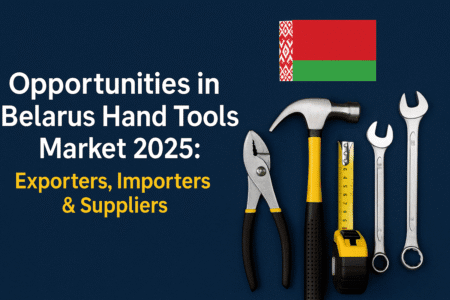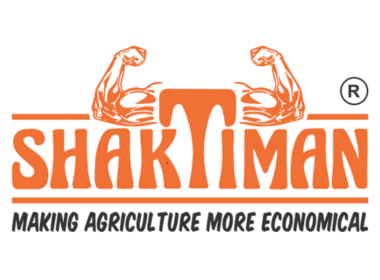
Introduction
The global hand tools industry has long been a backbone of industrial growth, powering sectors such as construction, automotive, repair, and household maintenance. In 2025, Belarus stands out as an emerging destination for exporters and distributors. Its geographical position as a gateway to Eastern Europe, rising demand for quality tools, and expanding network of wholesalers make Belarus a strategic market to watch.
For exporters, importers, and suppliers, Belarus offers a blend of opportunity and challenge. Understanding its supply chain, distribution trends, and international trade dynamics can unlock profitable partnerships and long-term growth.
This guide explores the state of the Belarus hand tools market in 2025, covering exporters, importers, wholesalers, and suppliers who drive the ecosystem forward.
Belarus Hand Tools Market Overview 2025
Belarus is undergoing steady industrialization, with growth in construction, automotive servicing, DIY, and small-scale manufacturing. The need for reliable, cost-effective, and durable hand tools has grown in tandem.
- Market size & trends: While official Belarus-only figures are limited, the global hand tools market is projected to cross USD 30 billion by 2025, with Eastern Europe contributing significantly. Belarus, though a smaller player, is seeing import growth rates of 8–10% annually in industrial and consumer tools.
- Consumer behavior: Belarusian buyers are shifting from low-quality, cheap imports toward premium yet affordable suppliers, particularly from India, Germany, and China.
- Economic advantage: Positioned between Russia and the EU, Belarus is strategically located for re-distribution into neighboring markets such as Poland, Ukraine, and the Baltics.
Key Hand Tool Exporters Serving Belarus
Hand tools imported into Belarus primarily come from three major sources: Asia, Europe, and domestic suppliers.
1. Indian Hand Tool Exporters
- India has become one of the largest global suppliers of hand tools, with exports growing at double-digit rates.
- Strength lies in forged steel tools, CR-V (chrome vanadium) steel spanners, pliers, hammers, and automotive tool kits.
- Exporters like Eastman Cast & Forge Ltd., Taparia, and other OEM manufacturers supply not only Belarus but also distributors across Eastern Europe.
2. Chinese Exporters
- China remains the volume leader, offering competitively priced bulk shipments.
- Popular among hardware retailers in Belarus but often facing quality perception issues compared to Indian or European tools.
3. German & European Suppliers
- Brands like Bosch, Gedore, and Wera Tools enjoy strong recognition for premium quality.
- Often used in professional industrial projects but less accessible to mid-scale Belarusian buyers due to higher price points.
Hand Tool Importers & Wholesalers in Belarus
Importers and wholesalers form the distribution backbone of Belarus’s hand tool market.
- Importer role: They source directly from global exporters and manage customs, certification, and logistics.
- Wholesale distributors: Supply chains extend into hardware stores, construction material retailers, industrial workshops, and automotive garages.
- B2B buyers: Importers often act as regional distributors, ensuring tools reach not just Minsk but also industrial hubs like Gomel, Brest, and Mogilev.
Characteristics of Belarus Importers
- Prefer bulk shipments with consistent quality.
- Value long-term supplier reliability over one-time purchases.
- Increasingly interested in OEM/white-label tools to build local brands.
Distribution & Supply Chain Insights
The flow of hand tools into Belarus follows a multi-layer structure:
- Global Exporters → Ship to Belarus via port logistics (mainly Klaipėda, Lithuania or St. Petersburg, Russia).
- Local Importers → Handle clearance, storage, and wholesale distribution.
- Wholesalers & Retail Chains → Resell to hardware shops, e-commerce portals, and B2B industries.
- End Users → Mechanics, construction workers, electricians, plumbers, and DIY homeowners.
🔑 Challenge: Import restrictions, currency fluctuations, and geopolitical shifts can affect pricing.
🔑 Opportunity: Exporters offering competitive pricing + after-sales support gain stronger distributor loyalty.
Opportunities for Global Exporters in Belarus
2025 offers exporters multiple growth avenues in Belarus:
- Growing construction industry: Large-scale infrastructure projects are fueling demand for wrenches, pliers, hammers, and fastening tools.
- Automotive repair sector: Belarus has a strong base of mechanics and car service centers, all requiring socket sets, torque wrenches, and spanners.
- Shift to premium tools: Importers are moving away from cheap disposable imports, seeking long-lasting CR-V steel tools from India and Europe.
- OEM opportunities: Belarus distributors are increasingly interested in branding imported tools under local labels.
- Regional access: Belarus provides exporters a route to supply Russia, Ukraine, and Baltic countries.
How to Connect with Trusted Suppliers & Distributors
For exporters and buyers, building partnerships in Belarus requires trust, compliance, and visibility.
- Trade Fairs & Exhibitions: Events in Minsk highlight local distributors and global suppliers.
- B2B Platforms: Websites like Alibaba, TradeIndia, and Global Sources are entry points, but direct networking yields better results.
- Local Associations: Belarus Chamber of Commerce often connects foreign exporters with reliable importers.
- Digital Marketing: Many Belarus buyers actively search for hand tool exporters from India, China, and Europe on LinkedIn and trade portals.
Pro Tip: When approaching Belarusian distributors, emphasize:
- Quality certifications (ISO, DIN, ANSI)
- After-sales support & warranty
- Custom branding (OEM opportunities)
Why Choose Indian Hand Tool Exporters for Belarus
Indian manufacturers are particularly well-positioned to serve Belarus:
- Strengths:
- Drop-forged tools made from chrome vanadium & carbon steel.
- Competitive pricing without compromising durability.
- ISO-certified factories catering to global standards.
- Market reputation: Indian exporters supply across Latin America, Middle East, and Eastern Europe, making Belarus a natural extension.
- OEM/Private Label Supply: Many Belarus distributors seek exclusive partnerships, which Indian suppliers offer.
Example: Eastman Cast & Forge Ltd. has a wide portfolio from spanners, pliers, clamps to power tool accessories, making it a one-stop solution for Belarus importers.
Future Outlook – Belarus Hand Tools Market Beyond 2025
Looking ahead, several trends will shape the market:
- Smart Tools & Ergonomics: Global demand is shifting toward ergonomic handles, precision designs, and multi-function tools.
- E-Commerce Growth: Belarus’s online retail space is slowly expanding, opening new B2C distribution channels.
- Partnership Models: Exporters offering exclusive dealership rights will attract top importers.
- Sustainability: Eco-friendly packaging and tools with longer lifespans are becoming buyer priorities.
By 2030, Belarus is expected to play a more significant role in Eastern Europe’s hand tool distribution, driven by industrial demand and global trade integration.
Conclusion
The Belarus hand tools market in 2025 is ripe with opportunities for exporters, importers, wholesalers, and suppliers. With industrial growth, a shift toward higher quality, and its role as a gateway to Eastern Europe, Belarus is becoming a valuable destination for global hand tool manufacturers.
- Exporters can tap into construction, automotive, and DIY demand.
- Importers and distributors in Belarus are seeking long-term, reliable partnerships.
- Indian suppliers, in particular, have a strong chance to expand due to their affordable, durable, and certified tools.
👉 For businesses looking to grow in 2025 and beyond, Belarus offers not just a market, but a strategic bridge into Eastern Europe’s wider hand tool ecosystem.























